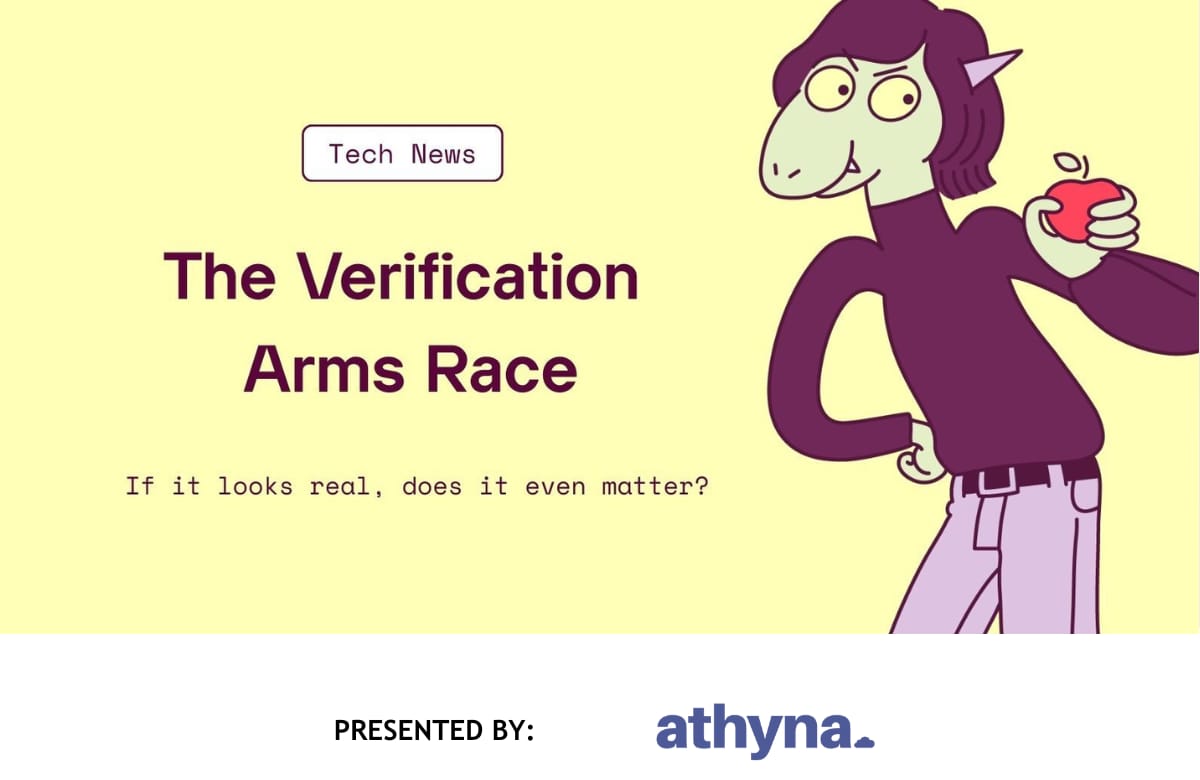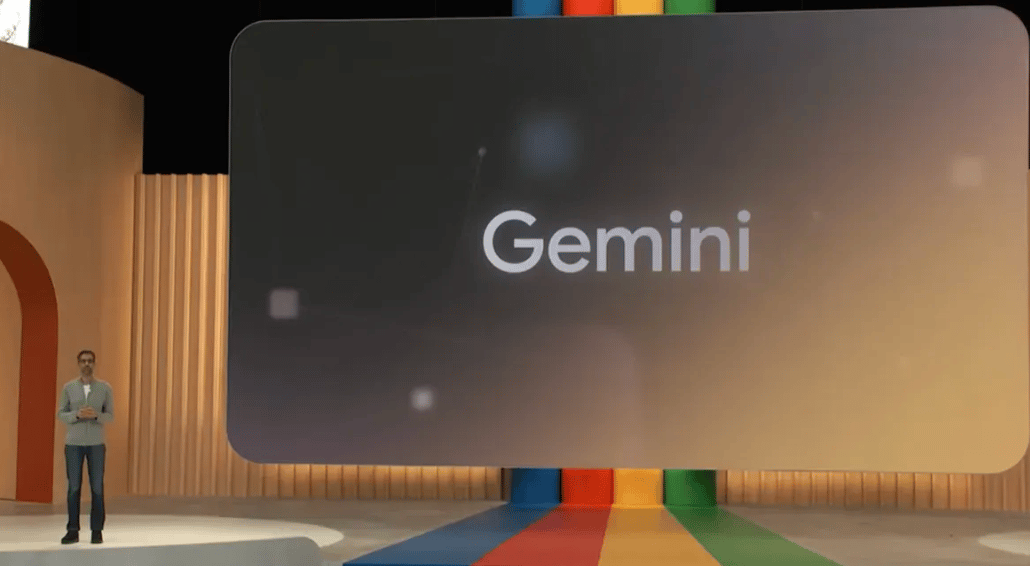- Roko's Basilisk
- Posts
- The Verification Arms Race
The Verification Arms Race
Plus: Orb controversy, UK watchdog vs AI, bond markets stress.
Here’s what’s on our plate today:
🧪 Detection is dead: verification is the new frontier.
🗞️ Altman’s Orb gets culty, UK watchdog probes AI bias, bond market braces.
🧠 Brain Snack: Build zero-trust systems with cryptographic content trails.
🗳️ Poll: Should AI content require default cryptographic verification?
Let’s dive in. No floaties needed…

Visa costs are up. Growth can’t wait.
Now, new H-1B petitions come with a $100k price tag.
That’s pushing enterprises to rethink how they hire.
The H-1B Talent Crunch report explores how U.S. companies are turning to Latin America for elite tech talent—AI, data, and engineering pros ready to work in sync with your HQ.
Discover the future of hiring beyond borders.
*This is sponsored content

The Laboratory
Detection is dead, long live verification
Humans have a unique ability that sets them apart from other species that co-inhabit the planet with them. They can construct abstract ideas in their imagination, then use different means of communication to disseminate those ideas to the rest of their band.
Many believe that it was this ability that helped humans establish bonds that helped them band together into groups, which in turn enabled them to establish civilizations spanning centuries and continents.
Until 2022, humans were the only ones who could create unique content, regardless of whether it was audio, visual, or text-based. All this changed when OpenAI released ChatGPT to the masses.
ChatGPT and the end of human-only content
Within the span of a few years, generative AI tools have gone from creating content that was easily identified as machine-generated. Today, even people with the keenest eyesight struggle to differentiate between human and AI-generated text.
This closing gap between human and machine’s ability to generate content has given rise to the need for tools that can differentiate between the expression of abstract thoughts of humans and their repackaging by machines.
Which brings us to one of the biggest names in the world of AI.
The rise of AI-detection tools
Google recently announced it is introducing image-verification features in the Gemini app so users can check if an image was generated or edited using Google’s AI.
The verification uses the company’s watermarking technology called SynthID, which embeds an imperceptible signal into AI-generated content. Since its launch in 2023, SynthID has been used to watermark over 20 billion AI-generated pieces of content.
According to Google, users can upload any image on the Gemini app and ask questions such as “Was this created with Google AI?” or “Is this AI-generated?” Gemini will then detect the watermark and provide a response giving context about how the content was produced.
Google further plans to expand this verification capability beyond images to video and audio formats. These could be rolled out across more parts of its ecosystem (including Search, Photos, and Pixel devices). Additionally, Google is working with industry partners through the Coalition for Content Provenance and Authenticity (C2PA) to embed broader metadata support so that AI-content generated outside Google’s ecosystem can be verified as well.
While Google may have found a way to empower its users to identify AI-generated content, the same cannot be said for every AI lab.
In 2023, following concerns around AI deepfakes spreading misinformation, OpenAI released its text detection tool. This was followed by another tool aimed at detecting images created by its text-to-image generator DALL-E 3.
At the time, OpenAI said that the tool could correctly identify images generated using DALL-E 3 about 98% of the time in internal testing and can handle common modifications such as compression, cropping, and saturation changes with minimal impact.
However, only the image detection tool survived in the wild.
Why AI detectors keep failing
By July 2023, OpenAI had removed the AI text classifier because it wasn’t accurate enough. The company said it had received feedback that it would use to explore better ways to verify text and is committed to creating tools that help users identify AI-generated audio and visual content.
This, though, was not an isolated incident. Despite repeated attempts from multiple companies, the reliability of AI-detection tools remains questionable.
This is because text-detection tools frequently misidentify human writing as AI-generated, especially when the writing is formal, straightforward, or produced by non-native English speakers.
A Stanford study highlighted this problem by showing that detectors often flagged essays from non-native speakers as AI simply because their sentence structures were more predictable. At the same time, these systems are incredibly fragile: basic paraphrasing or using a humanizer tool can collapse detection accuracy from strong performance to almost zero.
The situation is no better with video and image detection. Although these tools may look effective in controlled tests, they fall apart in real-world conditions.
A 2024 deepfake benchmark showed that once videos are compressed, cropped, or re-uploaded on social media, the visual clues that detectors depend on are often erased, causing accuracy to drop by 50% for video, 48% for audio, and 45% for image models.
Even Google’s new verification system, which relies on its SynthID watermarking, only works reliably on content generated by Google’s own models. It struggles with images created by other platforms like Midjourney or OpenAI, leaving businesses with a patchwork of inconsistent tools rather than a unified defense.
Behind this unreliability lie structural problems that need more than watermarking to be fixed.
Currently, AI detection tools rely on three primary methods that all have their own shortcomings.
The three pillars of AI detection technology
Text-based detectors look at patterns in writing. They measure something called perplexity, which tells them how predictable a piece of writing is.
This model rests on the understanding that AI writing is usually predictable because the model chooses the most likely next word. Human writing is messier and harder to predict. Text detection tools also look at burstiness, which is the natural variation in sentence length. Humans mix long and short sentences, while AI tends to produce more uniform sentences.
For images and videos, companies use digital watermarking. Like in the case of Google.
It places invisible signals into the pixels of an image or video at the moment it is generated. These signals cannot be seen by people, but software can detect them. Similar techniques exist for text, where small changes are made to word-choice probabilities to create a hidden pattern that AI tools can identify later.
Another approach is provenance metadata created through a standard called C2PA. Instead of trying to guess if something is fake, it verifies what is real. When a photo or video is created, this system attaches a cryptographic signature showing who created it, when it was created, and which tool was used. If someone edits the file later, the signature breaks, which alerts viewers that the content has been changed.
However, despite these methods, perfect accuracy is impossible.
As shown by the Stanford study, false positives in text detection often mistake human writing for AI writing, especially when the writing is very formal or simple is a major hurdle.
The inability to detect AI-generated content is not only a challenge for social and political institutions but also for enterprises.
The enterprise liability problem
For enterprises, the real challenge with AI detection is not simply figuring out whether a piece of content is fake, but understanding the consequences of being wrong.
Because detection systems are unstable and biased, businesses face several forms of legal exposure. One of the most serious issues involves discrimination in hiring and workforce management. This could have serious ramifications as they risk violating anti-discrimination laws such as Title VII in the United States or GDPR rules in the European Union.
Regulators have also responded to these risks by shifting the onus to enterprises. The US Equal Employment Opportunity Commission has warned that employers are responsible for AI-driven discrimination even when they purchase the software from outside vendors.
A separate concern comes from new compliance requirements. Under the EU AI Act, the use of AI systems in employment and education is classified as high risk. This means companies must prove their tools are reliable and include clear human oversight. A detector that cannot explain why it flagged a resume or essay will not satisfy these standards.
Why we still need AI-detection tools
However, despite their inability to ensure accuracy, some argue that AI-detection tools should remain in use. They believe even imperfect systems create enough friction to discourage plagiarism, spam, and misuse. For many institutions, the psychological effect matters as much as the technology because the possibility of being caught deters people from overusing AI. Others in cybersecurity say detection should be handled by trained human analysts who review evidence rather than by automated tools that make binary judgments.
The broader trend is also shifting away from detection and towards verification. Companies like Adobe, Microsoft, and Nikon are adopting the C2PA standard, which attaches cryptographic signatures to media so its origin can be checked reliably. As a result, organizations are moving toward zero-trust content policies, where anything without a valid signature is treated as unverified.
What survives in the age of AI
On the whole, AI-detection tools have, in a way, proved the ability of machines to mimic human content. And with chatter about Artificial General Intelligence gaining traction, soon identifying AI-generated content may become even more difficult.
In the meantime, content creators can console themselves that while distinguishing between them and machines may have become difficult, their ability to formulate abstract ideas and then present them to others may survive.


Brain Snack (for Builders)
 | 💡 Watermarks are failing, detection is flawed, and provenance metadata is gaining ground. If you’re building anything that publishes, shares, or moderates AI content, now’s the time to embed verification-first workflows.Think: zero-trust content policies, cryptographic signatures, and C2PA compliance baked into your pipeline. |

The context to prepare for tomorrow, today.
Memorandum distills the day’s most pressing tech stories into one concise, easy-to-digest bulletin, empowering you to make swift, informed decisions in a rapidly shifting landscape.
Stay current, save time, and enjoy expert insights delivered straight to your inbox.
Streamline your daily routine with the knowledge that helps you maintain a competitive edge.
*This is sponsored content

Quick Bits, No Fluff
Altman’s Orb = cult vibes? Critics say Worldcoin’s biometric Orb is veering into religious territory, with design choices and messaging that feel more like faith than tech.
UK watchdog eyes biased AI: Britain’s finance regulator will investigate if AI tools in lending and insurance are discriminating against consumers.
AI bonds flood shaky markets: A wave of debt from AI infra builders is adding pressure to global bond markets already stressed by high interest rates.

Wednesday Poll
🗳️ Should AI-generated content require cryptographic verification by default? |
Rate This Edition
What did you think of today's email? |





